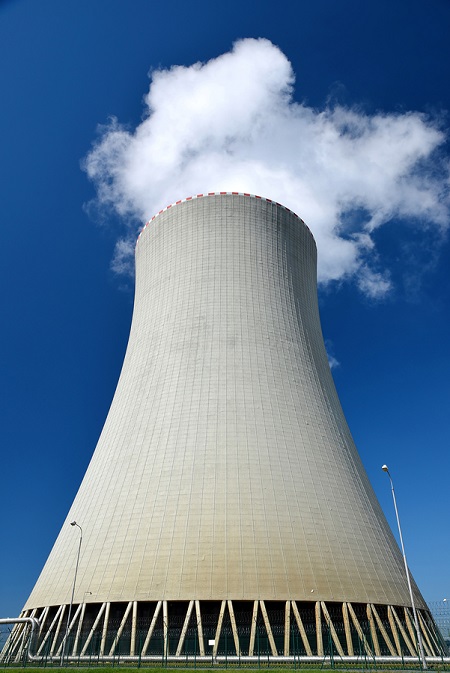Hyperbolic Cooling Tower Maintenance with Rope Access
 Hyperbolic cooling towers are a common structure found in oil refineries, petrochemical plants, chemical refineries, and thermal power stations. While cooling towers come in a range of sizes, from small roof-top units to more than 200 meters tall, hyperbolic (or hyperboloid) cooling towers are the giant, tapered structures prominent at nuclear power plants, coal-fired plants, and even large chemical plants.
Hyperbolic cooling towers are a common structure found in oil refineries, petrochemical plants, chemical refineries, and thermal power stations. While cooling towers come in a range of sizes, from small roof-top units to more than 200 meters tall, hyperbolic (or hyperboloid) cooling towers are the giant, tapered structures prominent at nuclear power plants, coal-fired plants, and even large chemical plants.
Cooling towers are an extremely important structure that removes heat from various sources of machinery or heated process materials. They are a critical component that keeps a facility functioning properly. When one of these structures fails, it is detrimental to the production process of the plant and the safety of the workers.
In order to cool the water that transfers heat from the plant to the tower, many cooling towers use a natural draft air flow generation method. A natural draft utilizes buoyancy via a tall chimney. Warm, moist air naturally rises due to the density differential compared to the dry, cooler outside air. Warm moist air is less dense than drier air at the same pressure. This moist air buoyancy produces an upwards current of air through the tower. Hyperbolic cooling towers are the design standard for a natural draft set up since they require a minimum usage of material and are structurally very strong.
Because hyperbolic cooling towers are very large structures, they are susceptible to wind damage & vibration. There have been a number of severe structural failures with cooling towers that succumbed to major wind speeds. Although these incredible structures are designed for high longevity and with limited maintenance requirements, a thorough inspection & repair program should be employed to monitor the condition of the cooling towers and address any issues that may arise quickly, before they become an expensive or dangerous hazard.
Inspection and maintenance should be scheduled every 2 to 3 years to keep a hyperbolic cooling tower in its best working condition. Cooling tower shutdown maintenance is time consuming and complex. In order to minimize downtime and quickly assess and address inspections and special repair projects, rope access is the best choice.
Because rope access requires minimal set-up time, an up-close and accurate inspection or repair can be performed much faster than using more traditional means of access like scaffolding. Plus, rope access is a cost-efficient way to complete this regular maintenance since there is minimal equipment and crew needed. The cost involved with Industrial Access’s rope access techniques does not increase anywhere near as dramatically as heavy machinery or scaffolding, making it a much cheaper alternative.
Downtime and associated losses can be prevented by proper operation and a thorough maintenance program for hyperbolic cooling towers. Contact our rope access experts at (770) 370-7055 to find out how we can keep your plant or facility energy efficient and up to regulation requirements.



